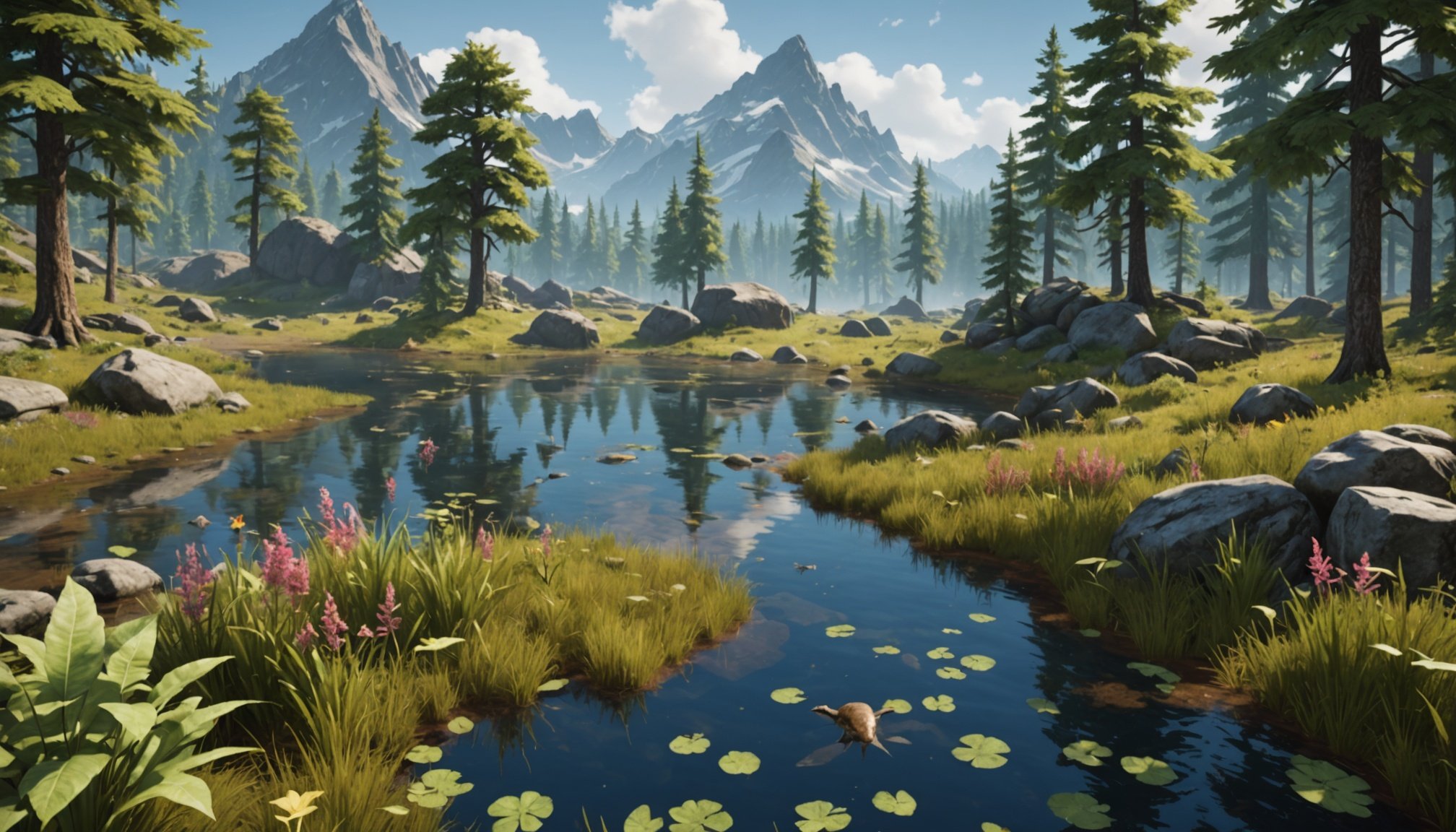Incorporating Real-Time Data in Gaming
In the evolving world of video game development, real-time data integration is becoming a game-changer, particularly with real-time wildlife data. This practice enhances gaming realism by creating dynamic, interactive ecosystems that respond to actual environmental changes. Imagine a game where weather conditions adjust based on live meteorological feeds, or animal behaviour changes according to real-world patterns. This integration not only enriches the player’s experience but also introduces educational elements, grounding gamers in authentic ecosystem dynamics.
However, there are inherent challenges in acquiring and efficiently using real-time biome insights. The variability and unpredictability of real-world data can complicate implementation, requiring robust algorithms to seamlessly incorporate data without disrupting gameplay. Additionally, sourcing accurate and timely data can be costly and technically demanding. Developers must weigh these challenges against the potential to revolutionize the interactive experience.
Also to read : Revolutionizing platformer games: harnessing neural networks for smart, adaptive enemy ai
Despite these hurdles, the benefits are substantial. Incorporating wildlife data increases player engagement by introducing unpredictable elements that challenge traditional gameplay paradigms. Environments that mimic the complexity of nature offer novel terrains for exploration and strategies, driving innovation in storytelling and character development. Ultimately, real-time data integration stands to redefine the boundaries of what is feasible in game design.
Methodologies for Integrating Biome Insights
Integrating biome insights into digital environments is a multi-faceted task requiring effective strategies. Biome integration techniques are pivotal for creating realistic simulations that captivate users. A successful integration begins with robust data collection.
This might interest you : Harnessing machine learning magic: crafting lifelike npc animations for an engaging open-world gaming experience
Data Collection Techniques
Collecting valid wildlife data is the cornerstone of accurate biome simulations. Various sources such as satellite imaging and on-ground sensors provide invaluable information about different ecosystems. Implementing IoT devices allows for real-time insights, capturing dynamics as they unfold.
The Yellowstone National Park project is an exemplary case, utilizing motion-activated cameras to track animal movements. This approach offers precise data for game developers to simulate realistic settings.
Algorithms for Simulation
Simulation methodologies demand advanced algorithms to mimic natural phenomena authentically. Algorithms like cellular automata and neural networks create intricate biome modeling systems. They enhance adaptive AI, crucial for real-time predictions and interactions.
Games such as “The Forest” incorporate these techniques, resulting in dynamic environments that respond to user actions, thus enriching the experience.
User Engagement Strategies
Game design strategies that incorporate captivating ecosystems significantly influence player behavior and engagement. By immersing players in diverse biomes, developers enhance user interaction. Feedback loops from gaming communities are invaluable for constructing appealing ecosystems, further refining their simulation design.
Case Studies of Existing Games
Exploring game case studies offers insights into how real-time wildlife data in gaming enhances the player’s experience. Several popular games leverage such data to enrich their virtual worlds, often creating immersive biomes that captivate players by reflecting actual ecological systems.
One noteworthy example is “Red Dead Redemption 2,” which incorporates wildlife data to simulate a dynamic ecosystem. The interplay between prey and predator, migration patterns, and habitat changes offer players a realistic wilderness adventure, making the gaming experience richer and more authentic. By reflecting real-world biomes, the game immerses players deeply into its environment, thus elevating their overall engagement.
Successful examples provide valuable lessons for future developments. For instance, balancing the complexity of data with enjoyable gameplay is crucial. Overloading with too much real-time data can overwhelm players, detracting from the seamless experience. Developers should strategically integrate wildlife data to enhance gameplay without compromising intuitiveness.
Future games can capitalize on these lessons by creating biomes that not only entertain but also educate. By tapping into real-world data, games can increase their relevance and appeal, potentially inspiring a new wave of ecologically themed adventures that resonate with a wide audience.
Tools and Technologies for Developers
The evolution of game development tools is allowing for increasingly immersive and realistic ecosystem simulations. Leveraging the right software and platforms is crucial for creating authentic biome models.
Software and Platforms
Developers can access a variety of powerful tools designed to model complex biomes and ecosystems. These tools include simulation platforms like Unity and Unreal Engine, commonly used for their robust rendering capabilities. Unity, for instance, provides an extensive ecosystem simulation suite through its add-ons, allowing developers to incorporate intricate environmental behaviors. Unreal Engine, with its high fidelity graphics, caters to developers aiming for hyper-realistic visual experiences.
Exploring resources like online tutorials and community forums can significantly enhance a developer’s proficiency in using these technologies. Websites like Udemy and Coursera offer courses tailored to different levels of expertise in game development tools.
Collaboration with Environmental Experts
Integrating the expertise of ecologists can greatly enhance the authenticity of ecosystem simulations in games. Successful collaborations—such as between developers and environmental researchers—have resulted in more realistic and engaging gameplay experiences. Resources like professional networks and environmental consultancies can help developers connect with the right experts for their projects.
Exploring such avenues can add a layer of realism that resonates with players, improving both educational value and entertainment.
Impact of Realistic Ecosystems on User Experience
Realistic ecosystems can significantly enhance user experience by promoting deeper immersion within gaming environments. When players navigate through meticulously crafted biomes, they often find themselves more engaged, captivated by the intricacies of nature reflected in the game’s design. Immersive realistic ecosystems not only offer aesthetic pleasure but also challenge players with dynamic environments that require strategic thinking and adaptation.
Gameplay that weaves environmental awareness seamlessly into its narrative can serve as an effective tool for environmental education. By integrating scenarios that highlight the importance of biodiversity and ecosystem balance, games can subtly educate players about real-world environmental issues. This approach not only enriches the gaming experience but also raises awareness and fosters a sense of responsibility towards nature.
Feedback from the gaming community points to a growing appreciation for games that incorporate biodiversity. Players often note the exhilarating challenge of encountering diverse flora and fauna. Many express that these elements contribute significantly to the depth and authenticity of the gaming experience. This feedback indicates a robust demand for games that balance entertainment with ecological education, showcasing the value of maintaining diverse, sustainable environments within a digital context.






